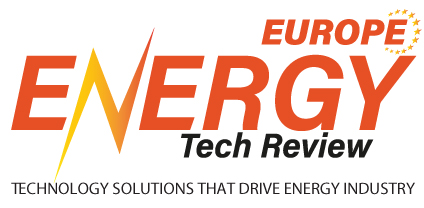Humans generate an incredible amount of waste - nearly 2 billion metric tons a year - and that number is expected to grow by 70 percent by 2050. To make matters worse, two-thirds of human-generated methane emissions come from waste. Methane is a potent greenhouse gas, with 25 times more warming potential than carbon dioxide. Dealing with our waste effectively is critical for the long-term survival of humanity.
Fortunately, technologies exist to deal with this problem. Anaerobic digesters that convert organic waste into biogas and renewable fertilizer in a controlled manner have been proven for a long time. However, biogas has historically been flared at waste sites (converted to carbon dioxide without getting any productive use) or combusted in a combustion generator to produce electricity. While both methods do destroy methane, they cause significant local air pollution in the form of NOx, SOx, and particulate matter emissions.
More recently, mainly through significant policy enablers in the US and Europe, larger biogas projects have been upgrading biogas to pipeline-quality natural gas (called Renewable Natural Gas or RNG) that is either injected into the gas distribution system or trucked to its end-use location. These projects displace fossil natural gas use and avoid local pollution at the waste source, a meaningful benefit. RNG has seen significant growth in recent years and should be a key part of the energy transition. However, RNG projects are capital-intensive and consume significant energy. Roughly 20 percent of the energy content in the biogas is used in cleaning and upgrading biogas to make RNG. This limits their deployment ability to very large projects, a relatively small fraction of the overall waste universe.
For example, over 80 percent of all landfills in the US are producing less than 2000 standard cubic feet a minute (SCFM) of biogas, a generally accepted minimum threshold for RNG production. Similarly, according to the American Biogas Council, there are approximately 1000 wastewater treatment plants that process more than 5 million gallons of wastewater a day (MGD). Only approximately 50 of those (representing about 5 percent) are practical for RNG projects. The same analogy is applicable to farms as well.
"Converting biogas to electricity, however, is not limited to large projects. With modest policy support, such projects could be viable at farms as small as 500 cows, wastewater plants processing as little as 5 MGD of wastewater, and landfills producing as little as 200 SCFM of landfill gas"
Converting biogas to electricity, however, is not limited to large projects. With modest policy support, such projects could be viable at farms as small as 500 cows, wastewater plants processing as little as 5 MGD of wastewater, and landfills producing as little as 200 SCFM of landfill gas. The challenge, however, has been the poor conversion efficiency and the local air pollution caused by traditional combustion-based generators.
Recent advances in technology have now made it possible to convert biogas into electricity without combustion. One such technology is fuel cells, which electro-chemically convert methane into electricity, producing just carbon dioxide and water vapor as a by-product. The conversion efficiency of the top-end fuel cells is 50 percent to 60 percent, which results in 30 percent to 50 percent more electricity from biogas compared to combustion. Bloom Energy (NYSE: BE), the market leader in stationary fuel cells, has deployed over 1 Gigawatt (GW) of their solid oxide-based fuel cells across 1000 sites globally. Its flagship biogas project operating on dairy manure biogas in Kerman, CA, has won numerous awards including a mini-documentary feature in the BBC Story Works Humanizing Energy Series.
Think about the material impact such technologies can have. For example, 80 percent of landfills producing less than 2000 SCFM of biogas represent about 2 GW of around-the-clock renewable electricity when high-efficiency fuel cells are used. Additionally, avoiding flaring or onsite combustion of the biogas at these sites contributes to about $2.6 billion to $6 billion of air quality-related health benefits.
The beauty of waste is that it exists wherever there is human inhabitation. Imagine a world where every community has a robust waste collection system to assimilate its waste, modular digesters or similar tech to convert the waste into biogas, and fuel cells to convert the biogas into electricity without any pollution. Renewables, such as solar and wind, and storage would supplement this framework. This community could provide clean, zero-carbon, reliable electricity for all its residents and be self-sufficient. It would enjoy the health benefits associated with avoiding the combustion of its waste, the economic benefits of 24x7 electricity, and the geopolitical benefits of not having to rely meaningfully on external sources for its energy needs.












